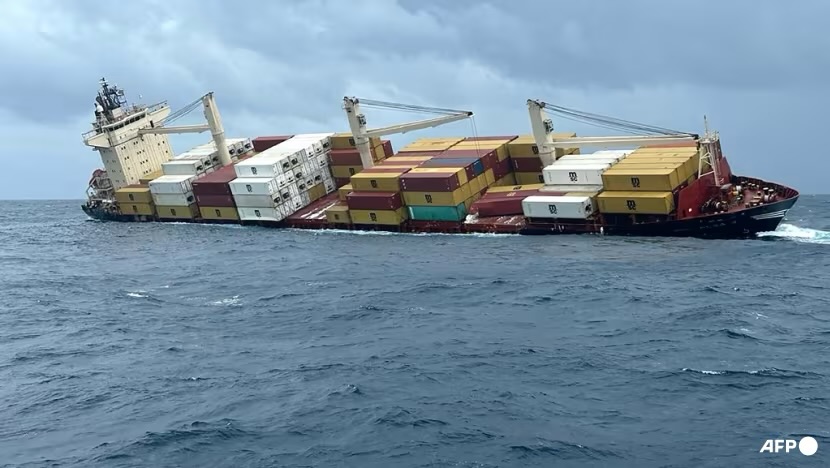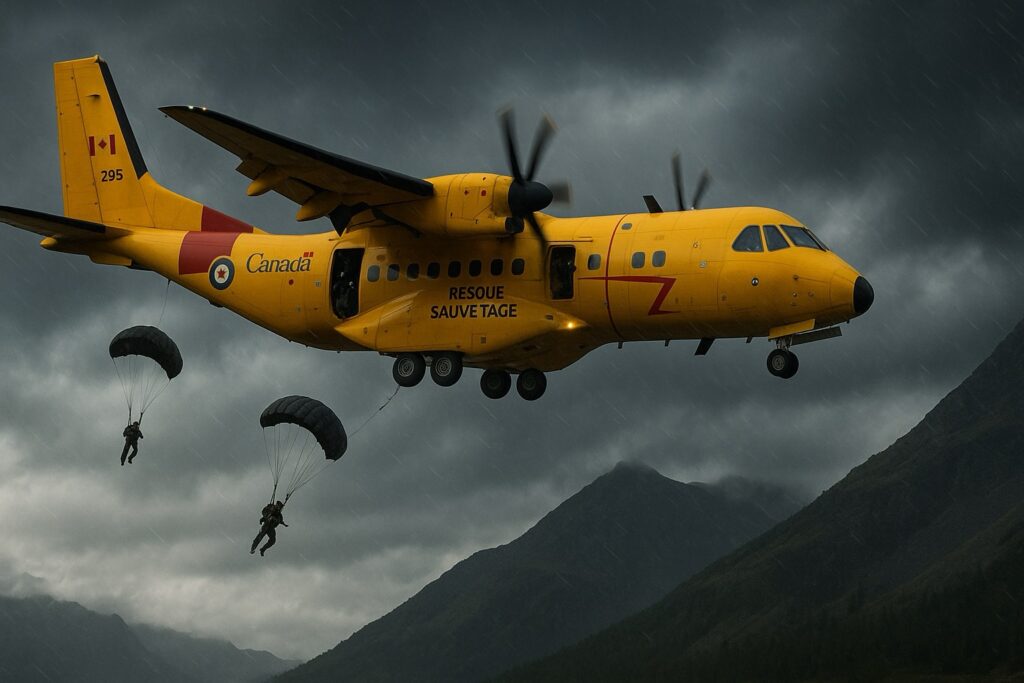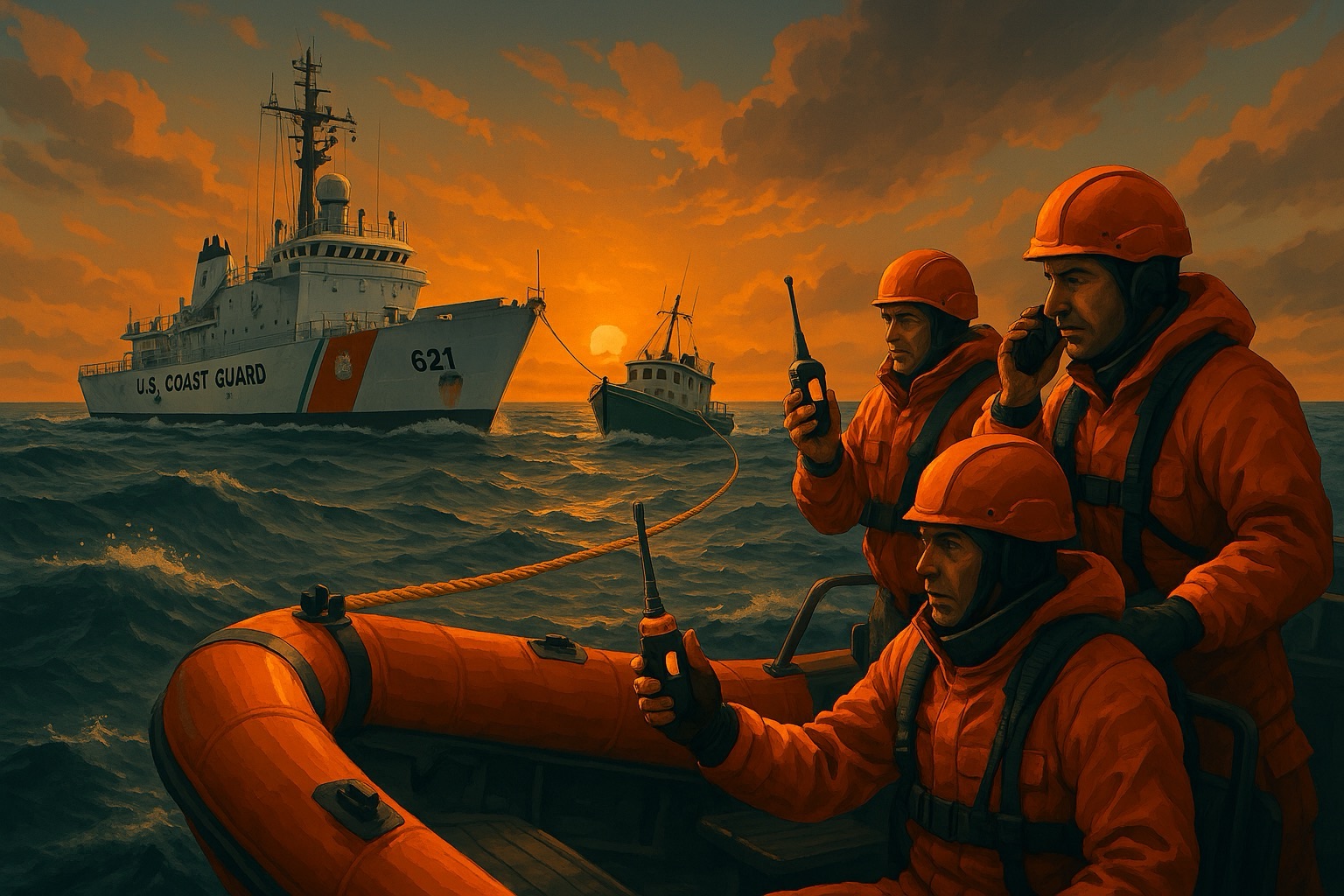This was a busy week in the SAR world! Below are three great cases showcasing successful SAR cases. And yesterday I published a look into the issues of search and rescue (SAR) within the Mediterranean region, not knowing that Italian courts were hearing arguments on the exact subject this week (more below).
Maritime Search and Rescue Operations
U.S. Coast Guard
The most significant maritime rescue operation this past week-ish was with a joint U.S. Coast Guard and U.S. Navy and the successful completion of the Lucky Harvest case in the Western Pacific. The USCG safely towed the 47-foot Lucky Harvest to the northwestern side of Guam (Hagåtña boat basin), arriving shortly after 8 p.m. on May 17, after locating the vessel on May 16 with two mariners aboard, disabled 125 nautical miles west of the island due to an electrical failure.
The rescue operation highlighted the critical importance of Emergency Position Indicating Radio Beacons (EPIRBs; #winning!), as the mariners’ activation of their EPIRB at 6:30 a.m. on May 16 allowed the Joint Rescue Sub-Center Guam watch to pinpoint the vessel’s location almost instantly. This case demonstrates the evolution of maritime safety technology, where precise location capabilities have transformed rescue operations from broad area searches to targeted recovery missions.
Not to be outdone by their West Coast peers, on the same day, the USCG conducted another successful rescue operation off the Florida coast, rescuing three mariners from a 54-foot vessel that had become disabled 74 miles off Cape Canaveral. The mariners had both a satellite phone and an EPIRB, which facilitated communication and location by Coast Guard crews from Ponce de Leon Inlet and Port Canaveral. Another win for EPIRBs.
Indian Coast Guard
The most dramatic maritime rescue from this week occurred yesterday, May 24, 2025, when the Indian Coast Guard launched for the Liberia-flagged container vessel MSC ELSA 3 in the Arabian Sea. The 184-meter-long vessel, which had departed from Vizhinjam Port on May 23 with an expected arrival at Kochi port on May 24, developed a dangerous 26-degree tilt that endangered the lives of all 24 crew members onboard and posed significant environmental risks.

Coast Guard ships and aircraft successfully rescued 21 of the 24 crew members, with the Captain, Chief Engineer, and Second Engineer remaining onboard to facilitate planned salvage operations. The incident has resulted in some containers falling into the sea, prompting ongoing risk assessment efforts to prevent environmental damage.
Land SAR Ops
Canada
Earlier this month Canada conducted its first operational SAR parachute jump conducted by the new CC-295 Kingfisher search and rescue aircraft. The rescue operation involved a woman who had crashed her plane near Prince George, British Columbia, approximately 70 nautical miles northeast of the city. The mission marked a historic milestone as the Kingfisher just entered full operational service in Canada on May 1st. The technological capabilities of the new aircraft proved decisive in the rescue’s success, with on of the SAR technicians comparing the advancement from the previous Buffalo aircraft to “comparing a 1967 Chevy to a self-driving Tesla”

The Kingfisher’s advanced camera systems enabled SAR technicians to examine terrain conditions in unprecedented detail before parachuting, with zoom capabilities allowing crews to “see the name brand on your ballcap” from significant altitude. The improved avionics and sensor systems enable faster searching and more precise deployment of rescue personnel, representing a fundamental shift in wilderness search and rescue capabilities.
Grand Canyon, U.S.
[As one who lives here Arizona, the heat is no joke! Be safe out there.] The Grand Canyon National Park experienced a tragic reminder of wilderness safety challenges on May 19, 2025, when park officials reported the death of Dennis Smith, a 74-year-old experienced hiker from Olympia, Washington. Smith was found unresponsive on the North Kaibab Trail approximately half a mile below the North Kaibab Trailhead at approximately 4:45 p.m. on May 15[8]. Despite resuscitation efforts by bystanders and National Park Service personnel, Smith was pronounced dead at the scene. Smith was attempting a challenging Rim-to-Rim hike from the South Rim to the North Rim when the incident occurred[8].
The incident prompted park rangers to issue strong advisories against hiking in the inner canyon during the hottest part of the day, between 10 a.m. and 4 p.m., as temperatures in the inner canyon were expected to reach 100°F (38°C) by the end of the week. Park officials emphasized that efforts to assist hikers may be delayed due to limited staff, the number of rescue calls, and employee safety requirements[8]. This case highlights the ongoing challenges of wilderness search and rescue operations, particularly in extreme environments where rescue resources are limited and response times may be extended.
Urban SAR Developments
Regional Coordination and Capability Enhancement
The North Central Texas Regional Urban Search & Rescue Working Group was held this past week on May 21, 2025. The meeting focused on enhancing overall response effectiveness for search and rescue teams within the North Central Texas Region, with particular emphasis on maximizing Homeland Security funding opportunities to address capability gaps for missions on both water and land.
The working group continues to advocate for increased Urban Search and Rescue capabilities by ensuring teams are equipped in accordance with the National Incident Management System (NIMS) resource typing and training standards. The group has demonstrated the region’s increased need for Urban Search and Rescue response, whether for flash-flooding, flooding, building collapse, or other accidents and incidents. This regional approach to urban SAR capability development represents a significant trend toward standardized, well-equipped response teams capable of rapid deployment for terrorism events, natural disasters, or large-scale emergencies. There has been a major national push for states to become less reliant on federal responses.
Policy Updates
International Legal Challenges to Maritime Rescue Policies
A significant legal development affecting search and rescue operations occurred on May 21, 2025, when Italy’s Constitutional Court heard arguments for the first time regarding the constitutional legitimacy of laws that impose sanctions on sea rescue groups. The case, brought before the court with interventions from Human Rights Watch and the European Center for Constitutional and Human Rights as amici curiae, challenges measures that severely limit rescue capacity in the central Mediterranean Sea. I recently published look into a look into the issues happening in the Mediterranean between NGOs and nation states.
The court is examining three questions concerning the Piantedosi Decree, which empowers Italian authorities to fine and detain rescue ships on various grounds, including alleged failure to abide by instructions from the Libyan Coast Guard. According to the International Organization for Migration, almost 32,000 people have died or gone missing in the Mediterranean Sea during attempts to reach Europe since 2014. The court’s decision could have far-reaching implications for Italy’s maritime policies and the protection of human rights at Europe’s borders and at sea.
